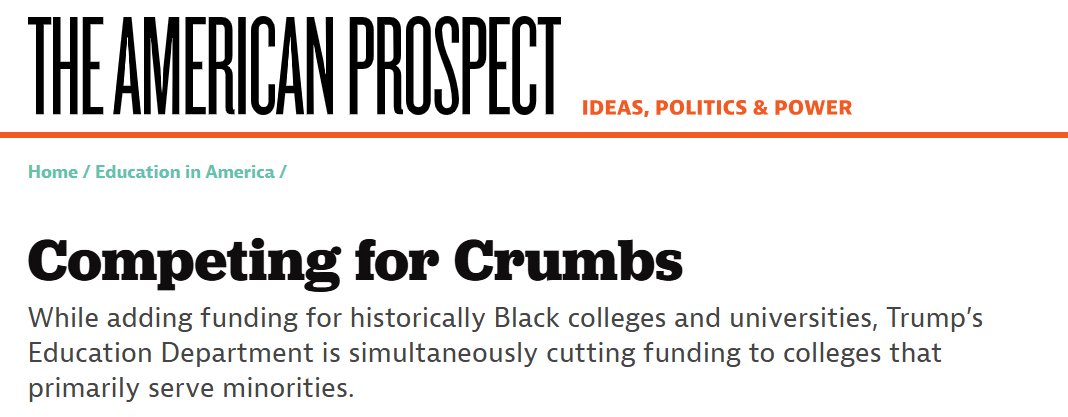Competing for Crumbs
 https://prospect.org/education/trump-historically-black-collegess-universities-HBCU-education-department/
https://prospect.org/education/trump-historically-black-collegess-universities-HBCU-education-department/

In March, President Trump made good on his campaign promise to begin shuttering the Department of Education (DOE) and “
return[ing authority over education to the states].” Key to his pledge was ensuring that any programs using Diversity, Equity, and Inclusion (DEI) frameworks lose their federal funding. Since then, U.S. Secretary of Education Linda McMahon has utilized the DOE to promote the conservative mission of supporting school choice, destroying so-called “radical theory” in schools, and promoting
patriotic education.
A recent casualty in this crusade has been funding allocated to minority-serving institutions (MSIs), or colleges and universities that enroll a significant percentage of students from historically underrepresented and marginalized groups. DOE is then using that same funding taken from MSIs to increase support for more high-profile historically Black colleges and universities (HBCUs), pitting higher education institutions that minority students disproportionately attend against one another.
Under Titles III and V of the Higher Education Act, multiple provisions ensure that MSIs receive grants from the DOE and other federal agencies. Funding is provided through two streams appropriated by Congress: discretionary funding (“Part A”) and statutorily mandated funding (“Part F”). In fiscal year 2025,
$350 million in discretionary funding was funneled into seven different MSI categories, including Hispanic serving-institutions (HSIs), predominantly Black institutions, Asian American- and Native American Pacific Islander-serving institutions, and others.
An institution must reapply to be categorized as an MSI every year, and if approved, can apply for competitive grants or receive assistance through a formula-based process from the federal government. Every MSI categorization has
different qualifications, with many of them not just simply requiring an institution to enroll a specific number of students from a certain minority group, but requiring that a high number are low-income and/or first-generation, and that the school maintains low education expenditures.
snip

